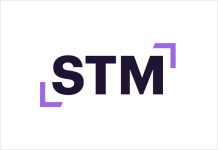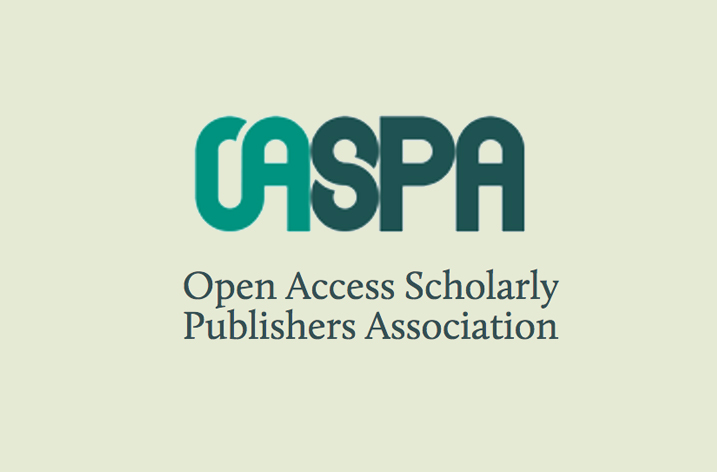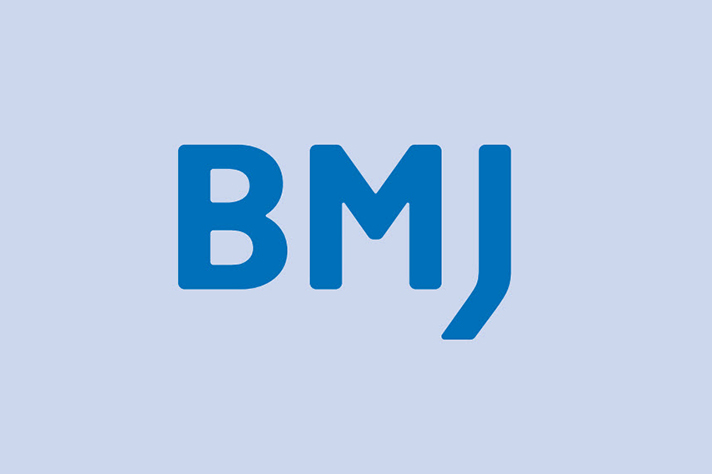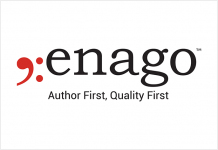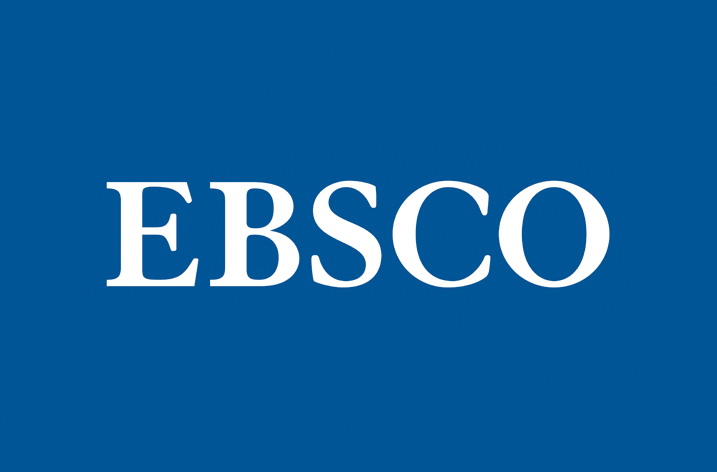
Introduction
The Transformative Journal (TJ) model was one of the strategies cOAlition S developed to help subscription publishers transition to full and immediate Open Access (OA) in a defined timeframe. This report looks at the data provided by the participating publishers for the calendar year 2022[1].
2022 data: executive summary
A key element of the TJ model is that participating journals must share data showing the OA penetration rate and whether they have met their agreed targets. Specifically, TJ titles are required to demonstrate an annual increase in the proportion of OA research content of at least 5% points in absolute terms and at least 15% in relative terms, year-on-year. Journals in the programme also agree to flip to full OA when 75% of the research content is published in this way.
Analysis of the 2022 data shows that of the 2326 titles in the TJ programme:
- 26 titles (1%) flipped to full OA from 1st January 2023
- 695 titles (30%) met or exceeded their OA growth targets and remain in the TJ programme
- 1589 titles (68%) failed to meet their OA growth targets and will be removed from the TJ programme.
- 16 other titles (1%) were removed from the programme for other reasons. Such reasons include the publisher no longer holding that title, having ceased publication of a title, among others.

Figure 1: Summary of the 2022 TJ data
Methodology
All TJ publishers were provided with a reporting template to indicate how many research articles they published in 2022, and how many were published as OA. Using previously publisher-supplied data from 2021, the template determined whether the 2022 growth target had been met and, if so, what the new OA penetration target is for 2023. The template also collected data on citations and downloads to show how articles published OA compared with articles (in the same title) published behind a paywall.
In analysing the reports, all titles were assigned a status of one of four mutually exclusive types:
- Journal has already flipped to full OA from 1st January 2023 (and thus will no longer be considered as a TJ)
- Journal has met the OA growth targets – and will continue as a TJ in 2023
- Journal has not met the TJ growth targets and will be removed from the TJ programme
- Other: this includes journals which have ceased publication, moved to another publisher or the publisher has decided to withdraw from the TJ programme.
Note that if a publisher indicated that they planned to flip some titles to full OA in 2024, this is recorded below. However, this doesn’t affect its TJ status. For example, if a title missed its 2022 target, it will still be classified as being withdrawn from the programme, even if the journal is planning to flip to full OA in 2024.
Analysis
Of the 16 TJ publishers, seven (ASTMH, Company of Biologists, Karger, London Geological Society, Rockefeller University Press (RUP), The Royal Society and Wageningen Academic) met or exceeded all their 2022 TJ targets. And though the number of TJ titles published by these seven publishers is relatively small (26 titles), it is interesting to note that, on average, learned society publishers seem to be more successful in meeting TJ targets than some of their commercial counterparts.
Of the publishers with larger TJ portfolios it is good to see that 94% of the BMJ titles (32 journals) and 62% of Cambridge University Press (CUP) titles (240 journals), met or exceeded their growth targets.
Cognisant that the overarching aim of the programme is to encourage journals to flip to full OA (or at least the research content they publish), it was encouraging to see that 75% of Oxford University Press (OUP) TJ titles (3 out of 4) had already flipped, as had 11 titles in the Springer Nature portfolio. In line with CUP’s stated ambition that the “vast majority of its research papers to be published OA by 2025”, the data also shows that, in addition to five flips to OA in 2023, a further 40 titles will flip from 1st January 2024.
Comparing the 2022 OA penetration rates with those provided in 2021 (see Figure 2) it is evident that the transition to OA has begun. For example, in 2021, there were 851 TJ titles which reported an OA penetration rate of 10% or less; in 2022, the number of TJ titles with this penetration rate had fallen to 578.
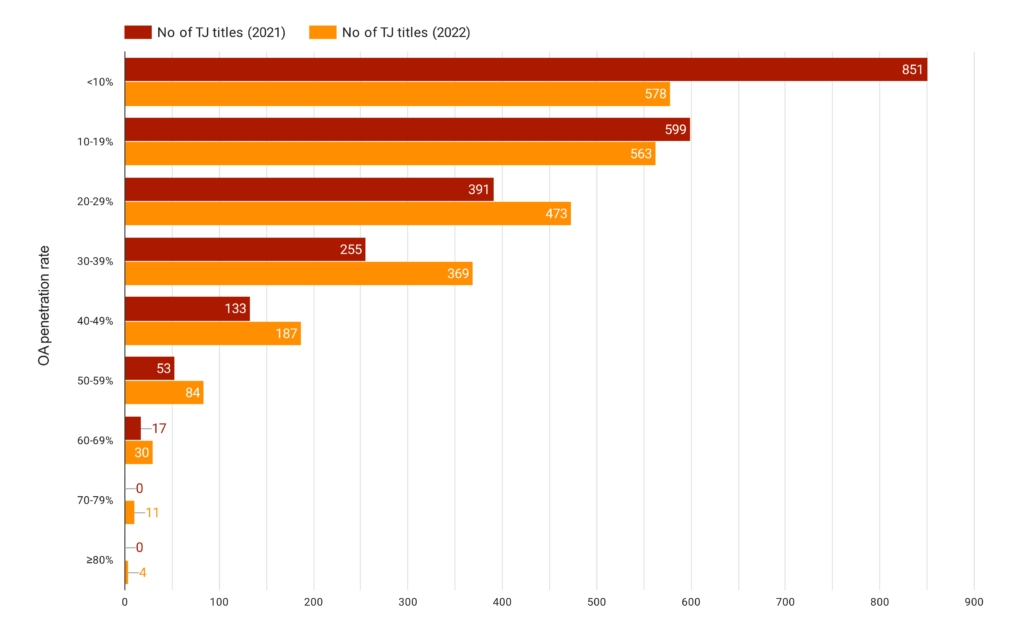
Figure 2: Comparing TJ OA penetration rates 2021 v 2021
However, despite these positive developments, it is clearly disappointing that over two thirds (68%) of the journals in the TJ programme failed to meet their OA growth targets. And, as made clear last year, titles which do not meet their targets will be removed from the TJ programme. As such, 1589 titles will lose their TJ status at the end of 2023.
Looking at the performance of individual publishers, the data shows that some 77% (1329) of titles published by Springer Nature – by far the largest publisher in the programme with some 1721 TJ titles – failed to meet their TJ targets. For Elsevier and the America Chemical Society (ACS) the figures were 63% (115 titles) and 56% (36 titles), respectively. Figure 3, provides a summary of all the data provided by all participating publishers.

Figure 3: TJ summary, by publisher
The fact that so many titles were unable to meet their OA growth targets suggests that for some publishers, the transition to full and immediate open access is unlikely to happen in a reasonable timeframe. As cOAlition S was seeking to encourage a time-limited transition, the decision to terminate this programme at the end of 2024 appears well-founded.
One of the conditions that a publisher agrees to when applying for cOAlition S TJ status is that when the OA penetration rate meets or exceeds 75% of the published research content, the journal will flip to full OA. As the data shows, relatively few titles are anywhere near this threshold: indeed, 25% of all TJs had an OA penetration rate of 10% or less in 2022 (see Figure 2).
It is especially discouraging to note that there are at least six titles, published by Springer Nature, which have been unilaterally withdrawn from the TJ programme, despite meeting this 75% OA penetration rate threshold.
For example, the 100% of the articles published in the journal European Journal for Security Research were published OA in 2022; for the International Review of Intellectual Property and Competition Law the OA penetration rate was 95%. Even ignoring the question as to what content subscribers are still paying for, if a title is not prepared to flip at these levels of OA, the only logical conclusion is that they will never flip to full OA.
Download / citation data and price transparency
As noted previously, the data also shows that, on average, OA content is downloaded more often than subscription content in the same journal. Springer Nature, for example, report that in 2022 OA articles published in TJs received, on average, 1.4 times more usage than subscription articles in the same journals.
The citation data is less clear cut. For example, the difference in the average number of citations made to articles published OA in Elsevier TJs, compared to articles in the same journals which are paywalled, is minimal: an average of 1.3 citations (OA articles) compared to 1.2 citations (for paywalled articles).
Participating publishers are also required to show how subscription prices are impacted as a result of some content being published OA. Expressed simply, if the volume of published content remains static year-on-year, then as the proportion of OA content increases, we should expect to see a decrease in the price of subscriptions. The Royal Society, for example, show how the subscription price for the journal Biology Letters fell by 4.74% (even after inflation of 4.1% has been added) because of the increase in the proportion of OA content.
In last year’s TJ report, we called on all TJ publishers to follow the lead of the Royal Society and show, at the journal level, how the availability of OA content has impacted on the subscription price. Unfortunately, many publishers – including ACS, Elsevier and Springer Nature have continued to provide more generic statements, making it impossible for subscribers to verify that they are not actually paying for OA content.
Annex A, below, provides information about each participating TJ publisher.
The complete data set on which the analysis was based on can be downloaded here.
Annex A: 2022 TJ data
American Chemical Society (ACS)
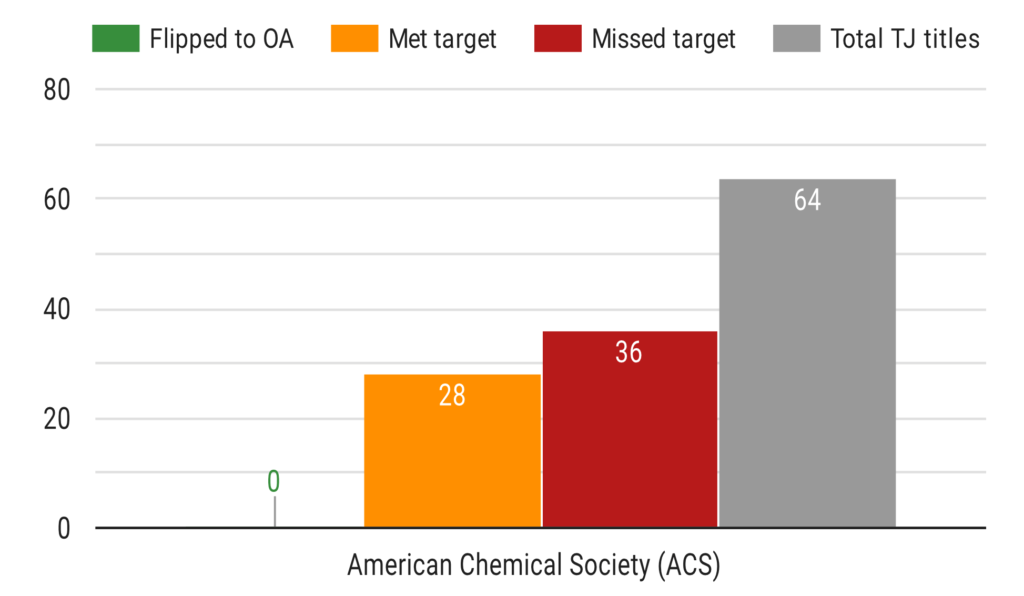
- TJ titles that met 2022 OA growth target: 44%
- TJ titles that missed 2022 OA growth targets and will lose TJ status: 56%
- Future flips (from 1/1/2024): None indicated
- Transparent pricing (source)
- Data (source)
- Notes: As ACS joined the programme on 1st April 2022, the OA growth targets have been adjusted to 75% (i.e. rather than 5% growth, each title needs to grow by at least 3.75%)
American Society for Tropical Medicine & Hygiene (ASTMH)
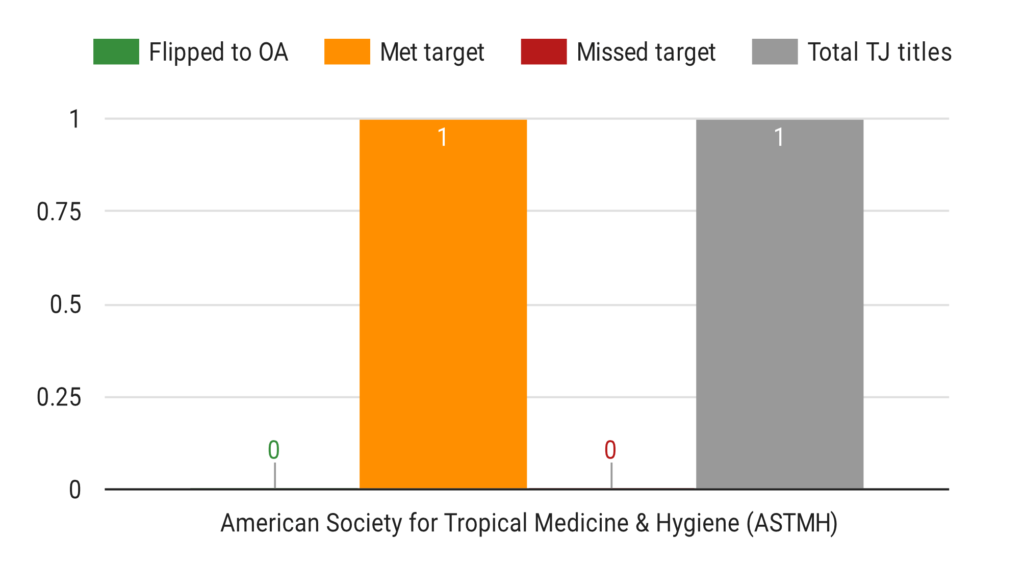
- TJ titles that met 2022 OA growth target: 100%
- Future flips (from 1/1/2024): None indicated
- Transparent pricing: not provided
- Data (source)
- Notes: Download and citation data not provided.
Association for Computing Machinery (ACM)
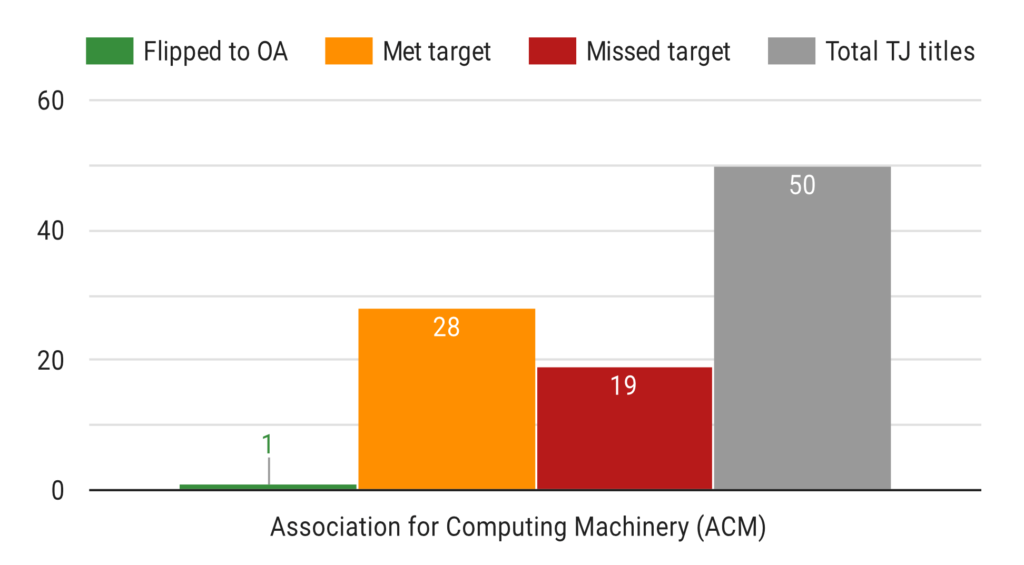
- TJ titles that flipped to full OA from 1/1/2023: 2%
- TJ titles that met 2022 OA growth target: 56%
- TJ titles that missed 2022 OA growth targets and will lose TJ status: 38%
- Other: 2 titles (4%) have been withdrawn from TJ programme by ACM as the journals are closing at the end of 2023
- Future flips (from 1/1/2024): None indicated
- Transparent pricing (source)
- Data (source)
BMJ
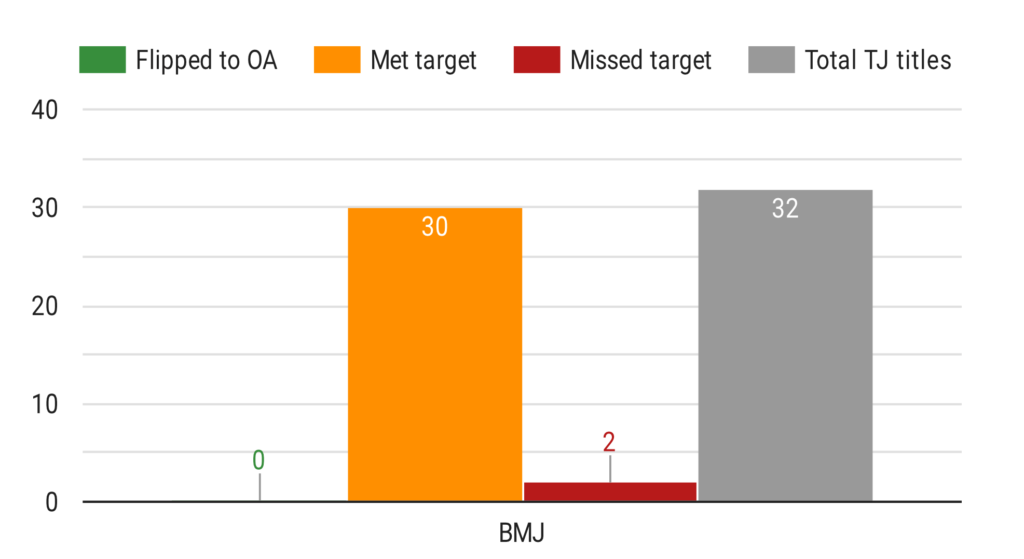
- TJ titles that met 2022 OA growth target: 94%
- TJ titles that missed 2022 OA growth targets and will lose TJ status: 6%
- Future flips (from 1/1/2024): None indicated
- Transparent pricing (source)
- Data (source)
Cambridge University Press (CUP)
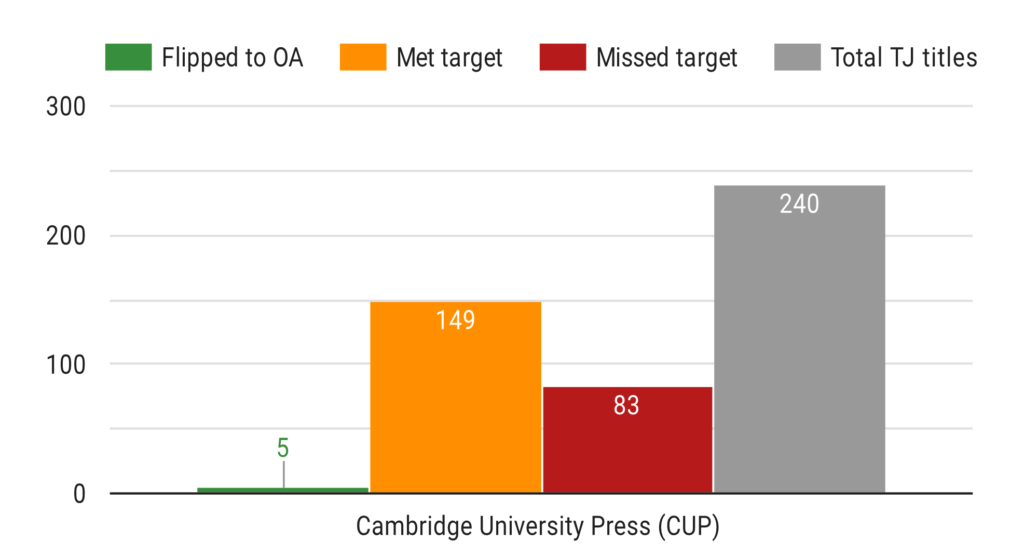
- TJ titles that flipped to full OA from 1/1/2023: 2%
- TJ titles that met 2022 OA growth target: 62%
- TJ titles that missed 2022 OA growth targets and will lose TJ status: 35%
- Other: one journal will cease publication at the end of 2023; two other titles have moved to a different publisher.
- Future flips (from 1/1/2024): 40 TJ titles
- Transparent pricing (source)
- Data (source)
Company of Biologists (CoB)
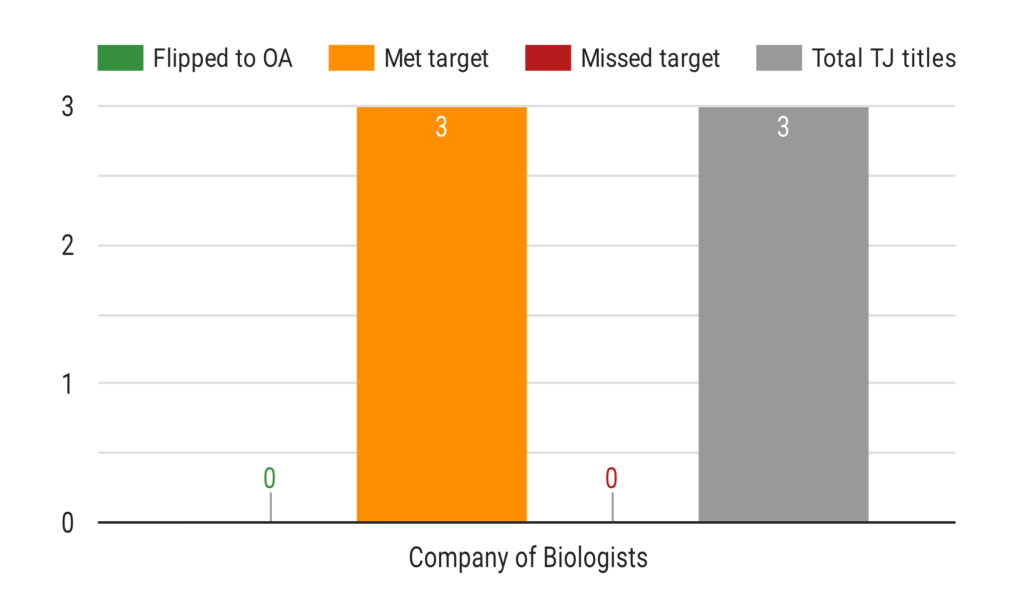
- TJ titles that met 2022 OA growth target: 100%
- Future flips (from 1/1/2024): None indicated
- Transparent pricing (source)
- Data (source)
Elsevier
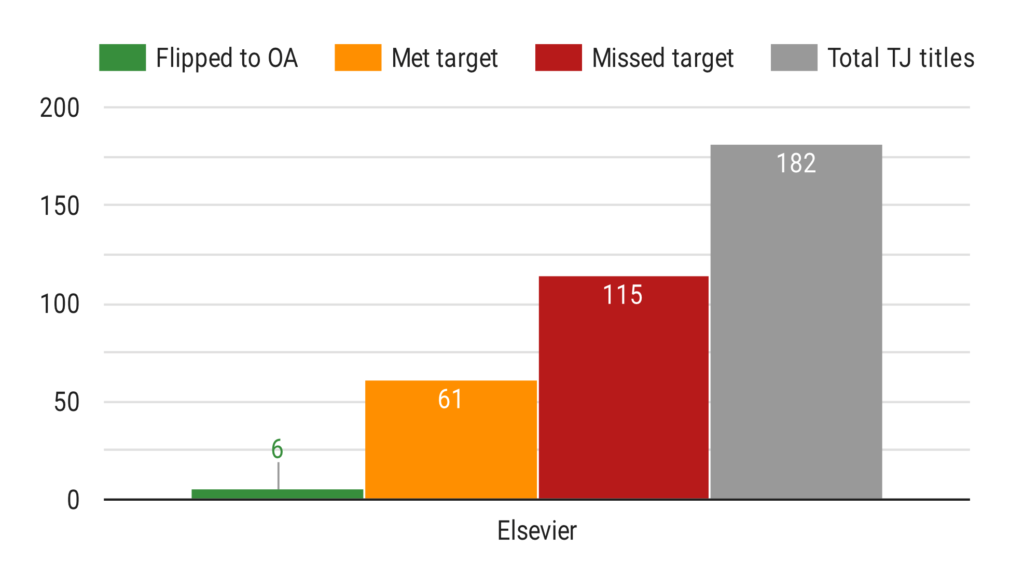
- TJ titles that flipped to full OA from 1/1/2023: 3.3%
- TJ titles that met 2022 OA growth target: 33.5%
- TJ titles that missed 2022 OA growth targets and will lose TJ status: 63.2%
- Future flips (from 1/1/2024): None indicated
- Transparent pricing (source)
- Data (source)
Inter-Research
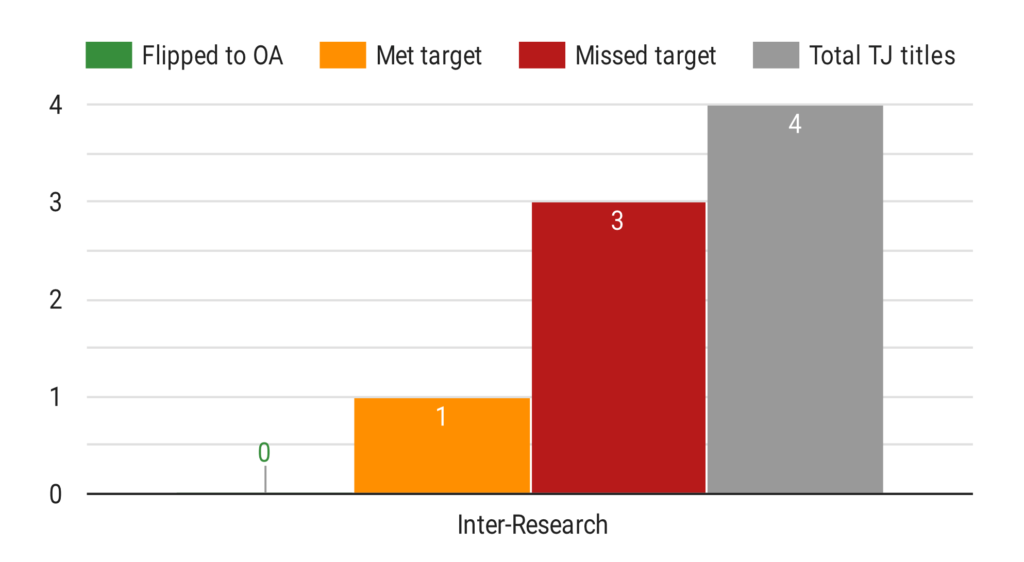
- TJ titles that met 2022 OA growth target: 25%
- TJ titles that missed 2022 OA growth targets and will lose TJ status: 75%
- Future flips (from 1/1/2024): None indicated
- Transparent pricing (source)
- Data (source)
Karger
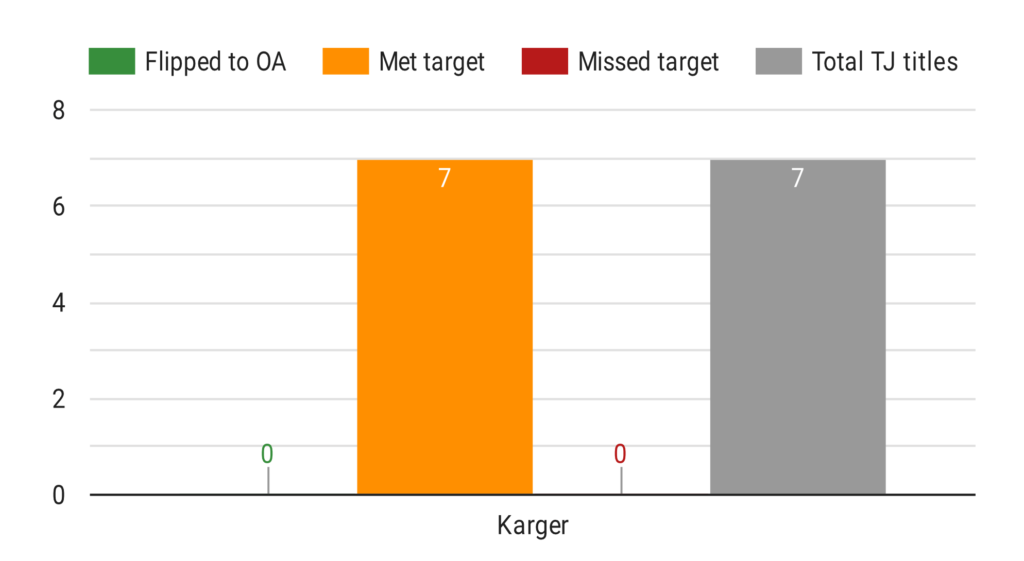
- TJ titles that met 2022 OA growth target: 100%
- Future flips (from 1/1/2024): None indicated
- Transparent pricing: Not provided
- Data: Not provided
London Geological Society

- TJ titles that met 2022 OA growth target: 100%
- Future flips (from 1/1/2024): None indicated
- Transparent pricing (source)
- Data (source)
Oxford University Press (OUP)
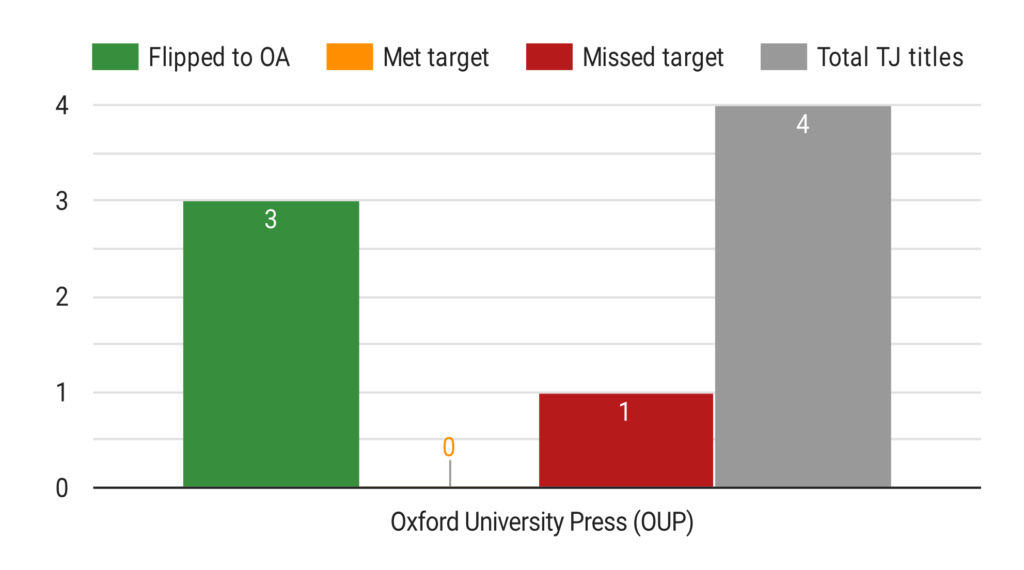
- TJ titles that flipped to full OA from 1/1/2023: 75%
- TJ titles that missed 2022 OA growth targets and will lose TJ status: 25%
- Future flips (from 1/1/2024): None indicated
- Transparent pricing: Not provided
- Data: Not provided
Rockefeller University Press (RUP)
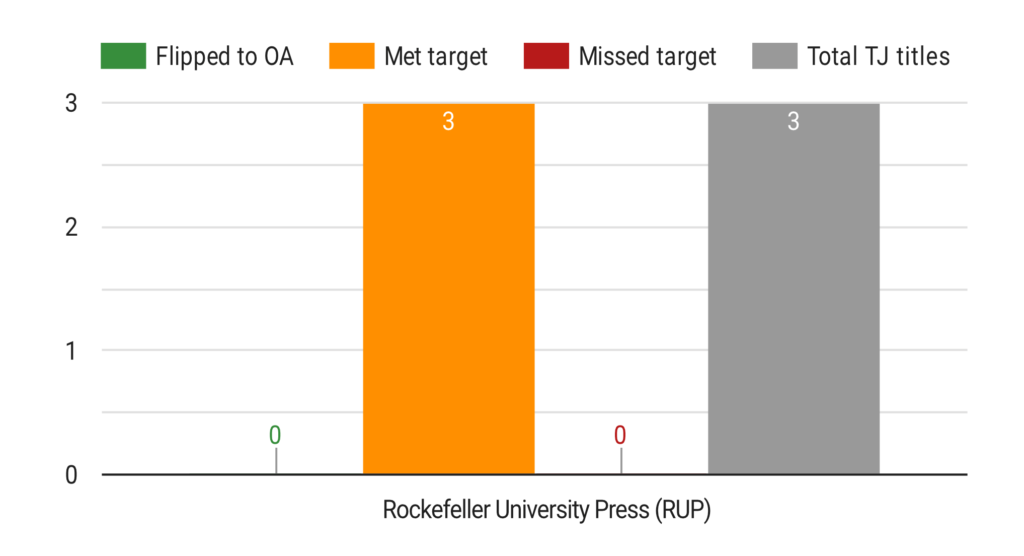
- TJ titles that met 2022 OA growth target: 100%
- Future flips (from 1/1/2024): None indicated
- Transparent pricing (source)
- Data (source)
The Royal Society
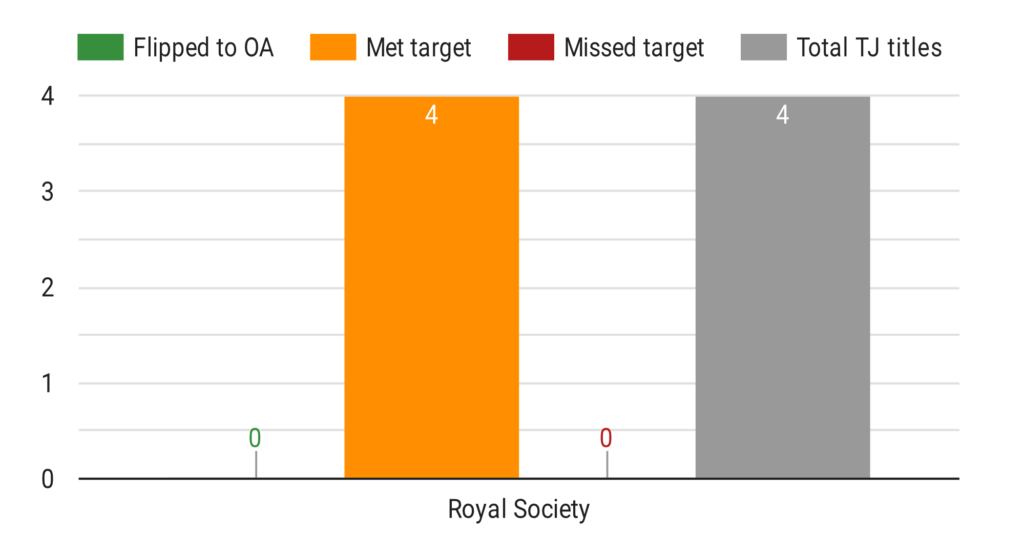
- TJ titles that met 2022 OA growth target: 100%
- Future flips (from 1/1/2024): None indicated
- Transparent pricing (source)
- Data (source)
Springer Nature
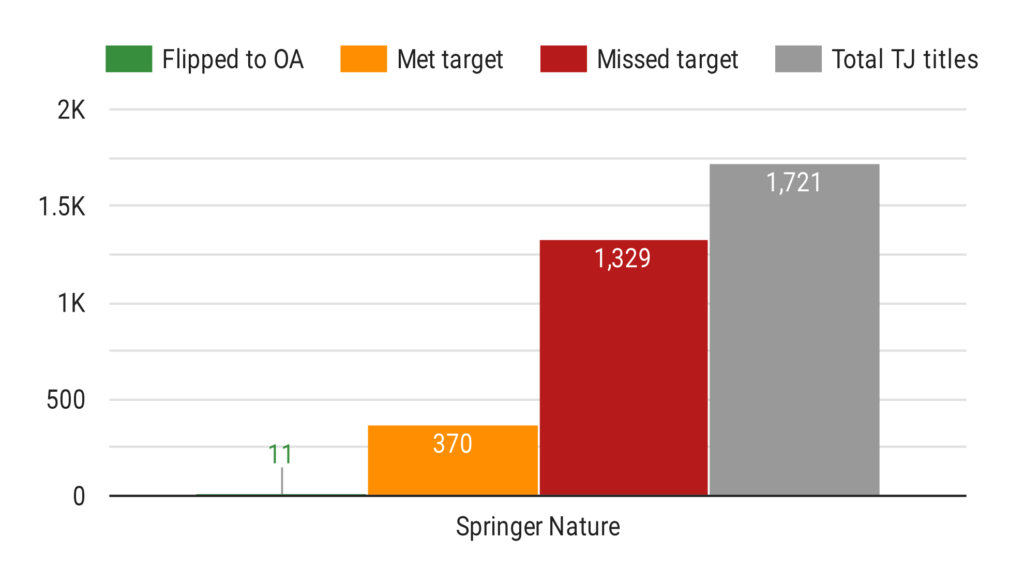
- TJ titles that flipped to full OA from 1/1/2023: 0.6%
- TJ titles that met 2022 OA growth target: 21.5%
- TJ titles that missed 2022 OA growth targets and will lose TJ status: 77.2%
- Other: 3 titles are no longer published by SN; 8 titles have been withdrawn from the programme
- Future flips (from 1/1/2024): 23 TJ titles
- Transparent pricing (source)
- Data (source)
Wageningen Academic
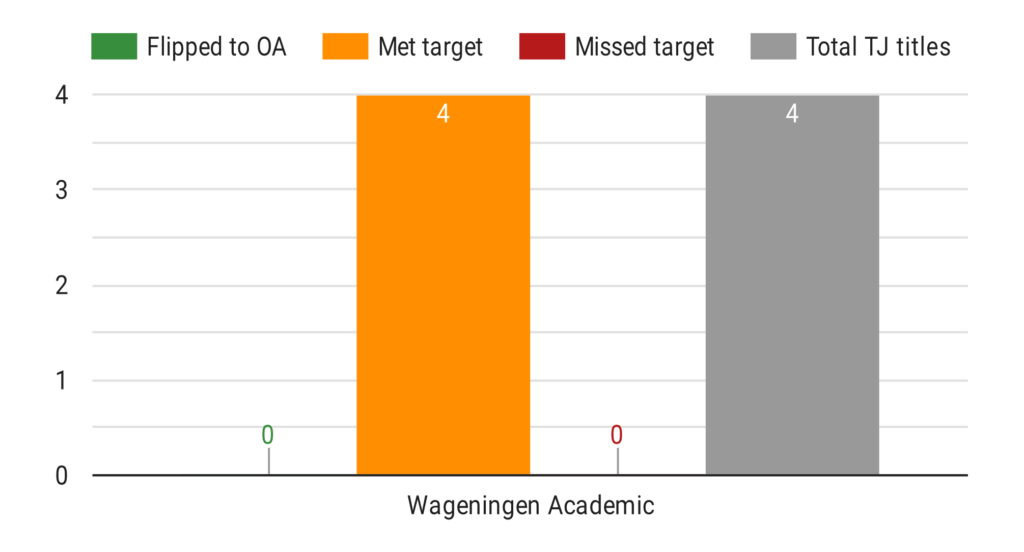
- TJ titles that met 2022 OA growth target: 100%
- Future flips (from 1/1/2024): None indicated
- Transparent pricing (source)
- Data (source)
World Scientific
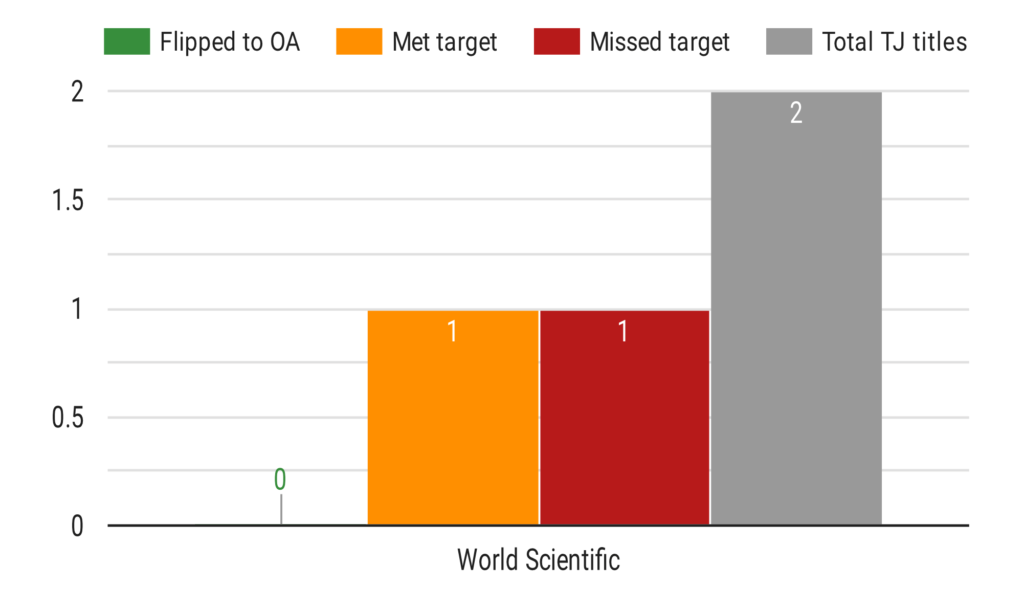
- TJ titles that met 2022 OA growth target: 50%
- TJ titles that missed 2022 OA growth targets and will lose TJ status: 50%
- Future flips (from 1/1/2024): None indicated
- Transparent pricing (source)
- Data (source)
[1] Note that five publishers – Canadian Science Publishing, Cold Spring Harbor Laboratory Press, EMBO Press, IEEE and Royal Society of Chemistry – only joined the TJ programme in late 2022 and thus have not been required to provide data for this report. They will be required to provide data for the 2023 report.


